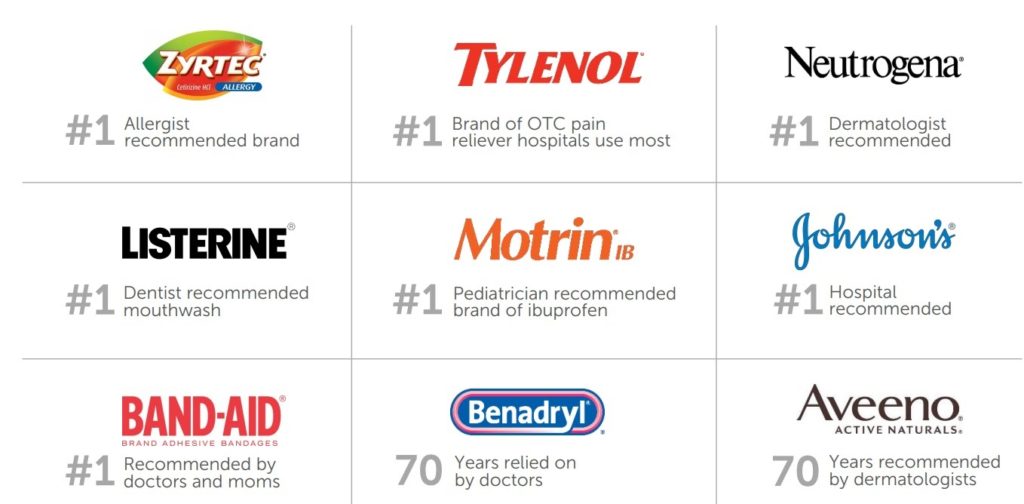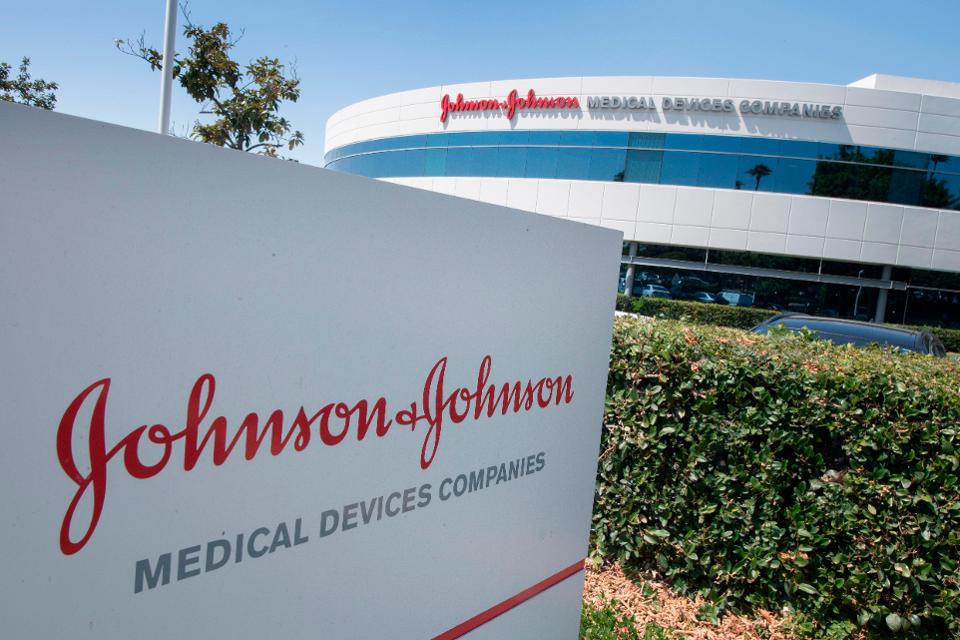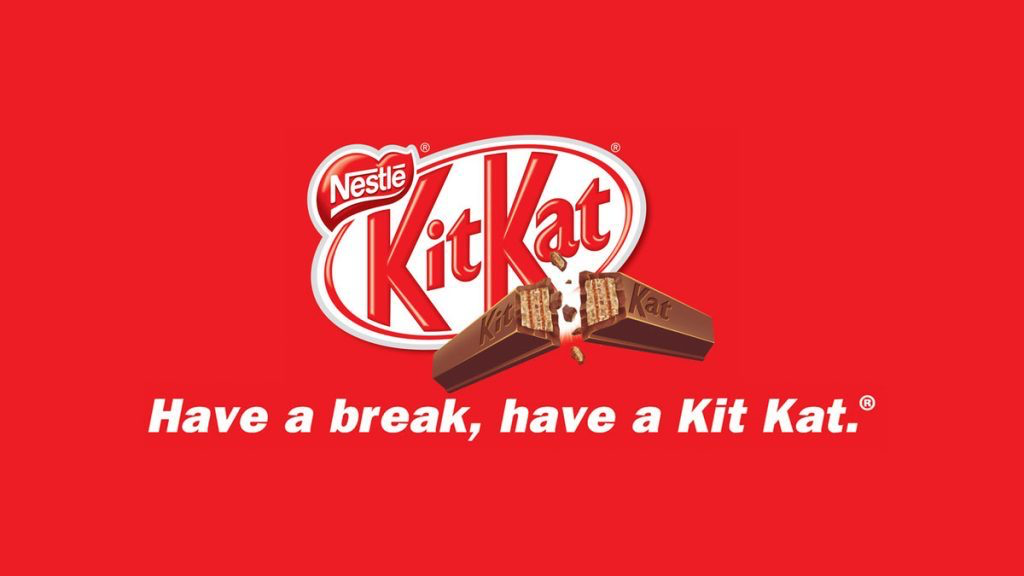Johnson and Johnson is a multinational conglomerate primarily focused on producing consumer-friendly packaged healthcare products, pharmaceuticals, and medical devices. A corporate giant with almost 250 subsidiaries and active operation in over 60 countries, a household brand so popular that it branches its products to almost 175 countries worldwide, the company was established in the US in 1886 and has a rich legacy of over 130 years. It is one of the most important companies with a net worth of $360 billion. The company is a market leader in most of the categories it operates and thus, occupies a substantial portion of the healthcare and pharmaceutical industry with brands like band-aid, Johnson’s baby care products, Tylenol, Listerine, and many more under its umbrella.
The organization was started by three brothers, Robert Wood Johnson, James Wood Johnson, and Edward Mead Johnson almost 134 years ago, in 1886. This company was inspired by Joseph Lister’s techniques. The brothers wanted to create a more ready-to-use surgical dressing and sterilization techniques, as opposed to Lister’s technique of spraying the room with carbolic acid for sterilization, and this idea paved the way for the foundation of one of the most successful companies of the company.
A year later after the formation of the company, they came out with their first two products, a manual for antiseptic wound treatment, which became an easily referable guide to antiseptic surgeries all across the US and the world’s first commercial first aid kits. These kits were originally designed for railroad workers but later it were used by almost everyone.
In 1894, the company saw the birth of its most popularly known “heritage baby” business. The two products that became the front runners of the company’s revenue engine, Johnson & Johnson baby talcum powder and maternity kits for mothers, which created a more antiseptic and safe environment during birth.
During 1896-1897 another first was accomplished by the company when they took a paramount step towards the woman’s health by introducing first mass-produced sanitary protection products. Also in 1898, they were the first to mass-produce dental floss at an affordable rate, to encourage dental health amongst its consumers.
Johnson and Johnson came up with some exceptional healthcare products during there start which is salient to their success to date.

Mergers And Acquisitions
After the invention of Band-Aid, the company started to expand overseas. It changed its corporate structure, which is followed till date. They decentralized the family of companies, all under the control of the parent company. Each company specialized in a particular product. In 1949 Ethicon, a subsidiary of Johnson and Johnson was incorporated into a separate company, to diversify the product line, and myriad acquisitions were followed in its name after that.
In 1959 Johnson and Johnson acquired McNeil Laboratories, a company focusing on the marketing of pharmaceuticals to hospitals, pharmacists, and doctors. After this acquisition, an aspirin – free elixir Tynole was launched by Johnson and Johnson, which could be utilized by the children as well. After a year of the launch, Johnson and Johnson were able to sell it without any prescription for the first time, because it was being recommended by the pediatricians and doctors abundantly.
At the same time in 1959, Johnson and Johnson also acquired a research laboratory in Switzerland Cilag. Later the marketing departments of Janssen Pharmaceutica and Cilag merged, in the late 1990s.
In 1961 Belgium’s Janssen Pharmaceutica N.V. also joined J&J. It was well known for its research and development of pharmaceuticals and medicines in various areas like HIV/AIDS, mental health, neurology, and many more. This helped in developing the product line of J&J where many medications became a source of revenue, Immodium, Reminyl, antipsychotic Risperdal, etc are some of them.
In 1994 the first coronary stent, called the Palmaz-Schatz, was introduced by J&J which revolutionized cardiology. Depuy was acquired by J&J in 1998 to expand its medical devices product line. Various acquisitions were made by J&J further down the line, to expand the market of medical devices, some of which included, Micrus Endovascular, Olive Medical Corporation, Biomedical Enterprises Inc, and many more.
In 2006 J&J bought Pfizer Consumer Healthcare for $16.6 billion, which furthered its product line by adding a very popular oral care product Listerine. Also, it benefitted from the large product line that already existed with Pfizer Consumer Healthcare which included Nexium, Advil, Chapstick, etc.
Product Lines
Johnson and Johnson divides its products into three categories
1. Consumer Products
These include household products that largely center around skincare, self-health, and essential hygiene. Neutrogena, Tylenol, Benadryl, Listerine, Band-aid, Johnson’s “no-tear” shampoo, etc are some of the popular products. These products have made Johnson a household name but only add up to 5% of the total incremental revenue.
2. Medical Equipment
The organization has used technology and science to invent products that aid the healthcare sector immensely. Whether it be in the field of orthopedics, surgery, or neurology, it has used smarter technology to evolve devices that provide efficient results and at the same time reduce cost. Joint replacement, sports medicines, trauma treating devices, biosurgery technology are some of the areas that J&J has revolutionized. In spite of a large product line in medical devices, the total incremental revenue from this product line is only 3%.
3. Pharmaceuticals
J&J has been a pioneer in research and development in the pharmaceutical sector. Due to this, they have revolutionized the pharmaceutical sector. They have given importance to mental health, cardiovascular diseases, diabetes, and many more such diseases and have found effective and cost-friendly solutions. Due to this., 92% of their revenue is based on their pharmaceutical successes. Some of their achievements in this field are, Ortho Gynol ( first family planning product ), Procit ( used to fight anemia), and Zytiga ( resisting prostate cancer ).
Marketing Strategy
J&J has always believed in quality and this aspect helps in building loyalty and trust amongst its consumers, especially when in today’s world natural beauty and healthcare products are given importance, the company easily taps into the market to sell its products. It caters to all the ages, which has resulted in a broader consumer base and has helped it to become a renowned household name.
The distribution channel of J&J also plays a key role in its marketing strategy. They utilize local vendors to build and sell their products. They have a decentralized approach to business, which gives more power to the employees at ground level to make decisions according to the local environment. At the same time, it has accepted online marketing as a method to sell their products, which has been capitalized in their favor.
Emotional marketing has been a salient strategy of the brand since the beginning. They have used strong messages to portray their focus on skincare, self-care, and essential products. Using ad campaigns like “choose gentle” or “no more tears” helped in creating a connection with the target market and thus has led to an increase in sales. Building trust and loyalty amongst parents through storytelling campaigns have also been successful for J&J.
Also Read: Glenmark Pharmaceuticals- A New Way For A New World
Reasons for success
Johnson and Johnson has lasted more than a century in the market, where most companies fail in the early phases, this company has outdone most. It still holds a substantial share in the market and continues to develop. So here are certain points that reflect its success:
Corporate structure
It follows a decentralized structure of the organization, which aids the growth of their company, one of the few companies that are able to follow such a system. This system gives power and authority to the lowest level of organization to take decisions, which in turn helps the brand to grow locally. At the same time, it reduces the risk-on assets. If one subsidiary fails to perform, the growth of the entire company is not jeopardized because of the same.
Healthcare products
Self-care, skincare, and essential care products help in materializing a brand image amongst the consumers. Even though healthcare products do not account for a large portion of revenue, they help in building brand loyalty for J&J. At the same time, the inelasticity of demand helps in sustaining the growth of the company.
Shareholders interest
The organization has always kept the interest of their shareholders in mind. It is amongst a few of those companies that can be claimed as dividend aristocrats. As it raises its dividend for the 58th consecutive year, by 6.3 %, we can claim it to be investor-friendly. These practices inculcate confidence in the investors, which the company capitalizes on.
A limited number of CEOs
134 years of legacy and only nine CEOs. This strategy has worked in favor of the company. Each CEO has led the company into a new direction and has expanded the base of operation of the company. For example, when William C. Weldon became the CEO in 2002, under his leadership the company entered into therapeutic areas, which helped the victims of HIV/AIDS. Good leadership is important for sound growth, which is proven by Johnson and Johnson’s company ethics.
Research and development
The success of the company is, to a large extent, owing to the research and development wing. The success rate of the pharmaceutical product line has been due to extensive research and development that has taken place. $11.4 billion have been issued to research and development by the company in 2019. The funding is required to clinically test drugs and considering the success rate is as small as 10 percent, it is important that the company boosts the research department to stand out from its competitors.
Employee satisfaction
Lastly, the company has not left behind the manpower that works for its success. It has practiced a decentralized structure, which has largely improved the engagement of human resources in the company. This has directly affected the motivation levels of the employees, even more than the financial incentives. At the same time, it offers variable programs to meet the necessities and benefits of the employees.
J&J has become a legacy, they have been on the journey to provide better healthcare and pharmaceutical aids for over a century. The company with AAA crediting has proved itself, with roots that cannot be disturbed by even the mightiest competition. The future of the company is safer than most and their opportunities are vast.
For more content like this, subscribe to our newsletter.
Also Read : Philips – The Global Consumer Electronics Brand With Innovation At Heart




Fully detailed and well presented blog about the company. Worth a read
Thank you for your lovely feedback